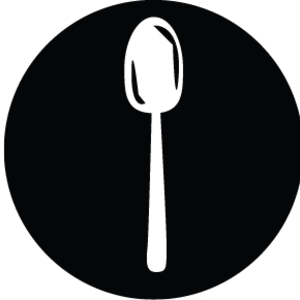Ever think about all of the science that happens in a restaurant, not just inside of the kitchen? Well, each step to eventually receiving your food is perfectly crafted to influence your dining experience. Charles Spence points out in his new book, Gastrophysics: The New Science of Eating, that whether you have noticed it or not, eating is the one of our most multi-sensory experiences. This means that we are affected by everything from weight to sound. In one study, Spence even found that adding heavier forks and knives to the table made customers think more highly of their meal.
Since much of what we perceive as flavor comes from how we see, hear or smell food, you’d be surprised by how much restaurants can influence your meal out.
1. Lighting

I can’t remember the last time I went out to dinner with my parents and my dad didn’t pull out the flashlight on his phone to read the menu. According to a Cornell study, diners in well-lit restaurants were more likely to order healthier menu options (like fish and veggies) and eat 39% fewer calories, compared to diners in restaurants that were dimly lit. They found that the bright light helps us become more alert and aware of what we are eating.
2. Noise Level

Whether we are in tune to it or not, music can influence our perception of how a food is going to taste, from high notes enhancing sweetness to low notes favoring bitterness. Also, the tempo of the music played can help determine how much time diners will spend in the restaurant. For example, by playing slower, low-tempo music, diners typically stay in the restaurant longer and will end up ordering more food and drinks.
3. Temperature of the Room

Restaurants can be sneaky with this one. As it turns out, restaurants that have colder temperatures made diners feel more hungry and consume more food than restaurants that felt warmer. Maybe bringing a sweater to dinner wasn’t such a bad idea, after all.
4. Expectation
Simply reading a menu can make our expectations of a meal higher, and can lead us to believe that the quality of the meal is so much better. Think about it, “butter poached East Coast oysters” already sounds so much better than just plain “oysters.” Adding words such as “foraged,” “market,” and “hand crafted” to any menu item can make a seemingly plain food seem way more appealing.
5. Direction of Your Food

Another detail Spence observed was how the direction of our food when served affects us. If something points directly at us with a sharp angle, say a slice of pizza or a piece of cake, we subconsciously associate that experience with danger (think, the end of a sharp weapon). If something with an angled end is served with the point facing towards the diner, they typically will give the food a lower rating than if the food was pointed away from them.
So, now that you know a few restaurant secrets, don’t let them fool you next time you’re eating out.



